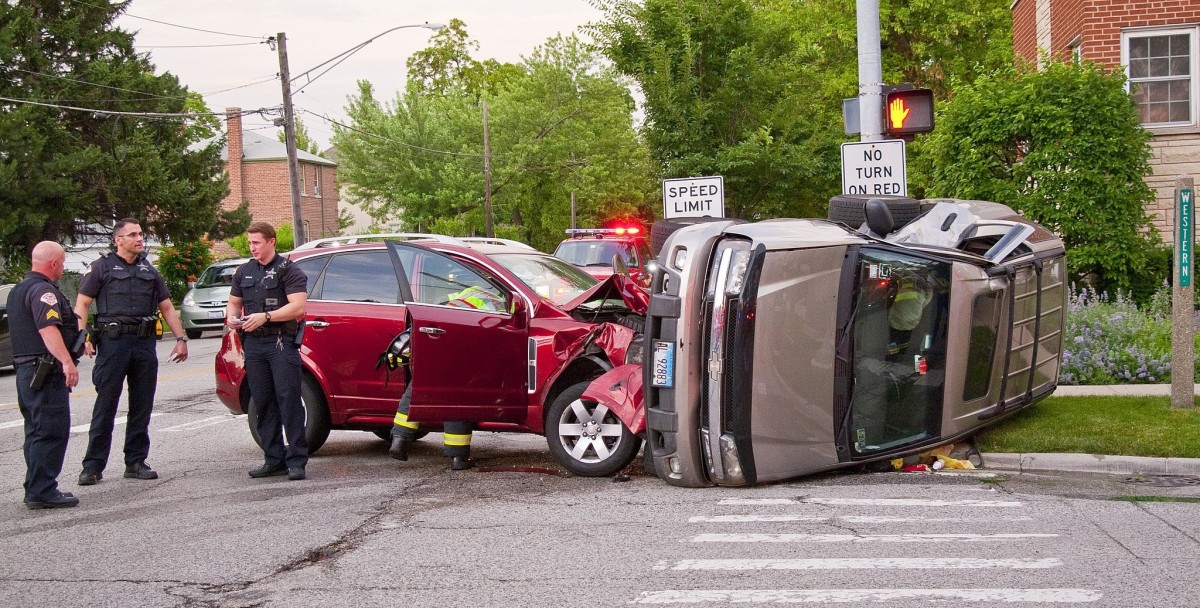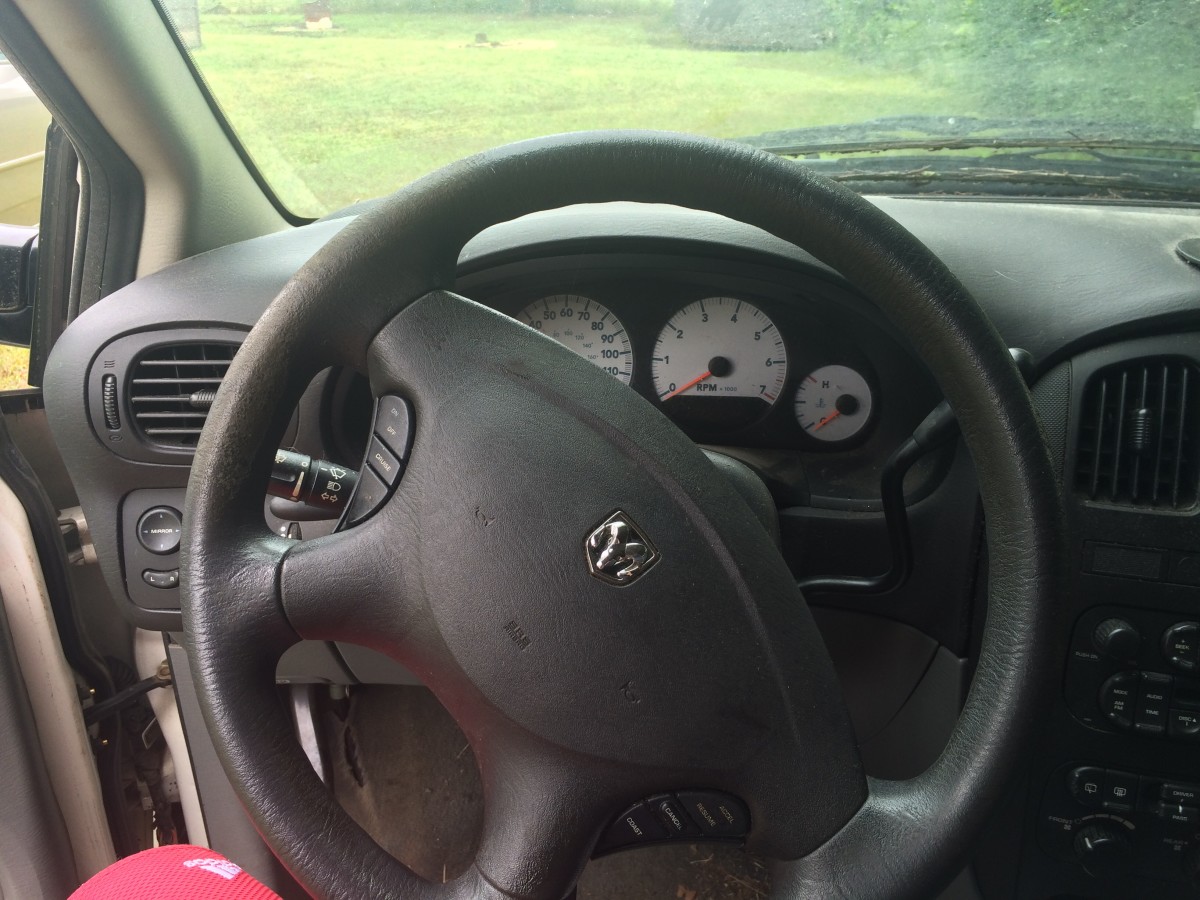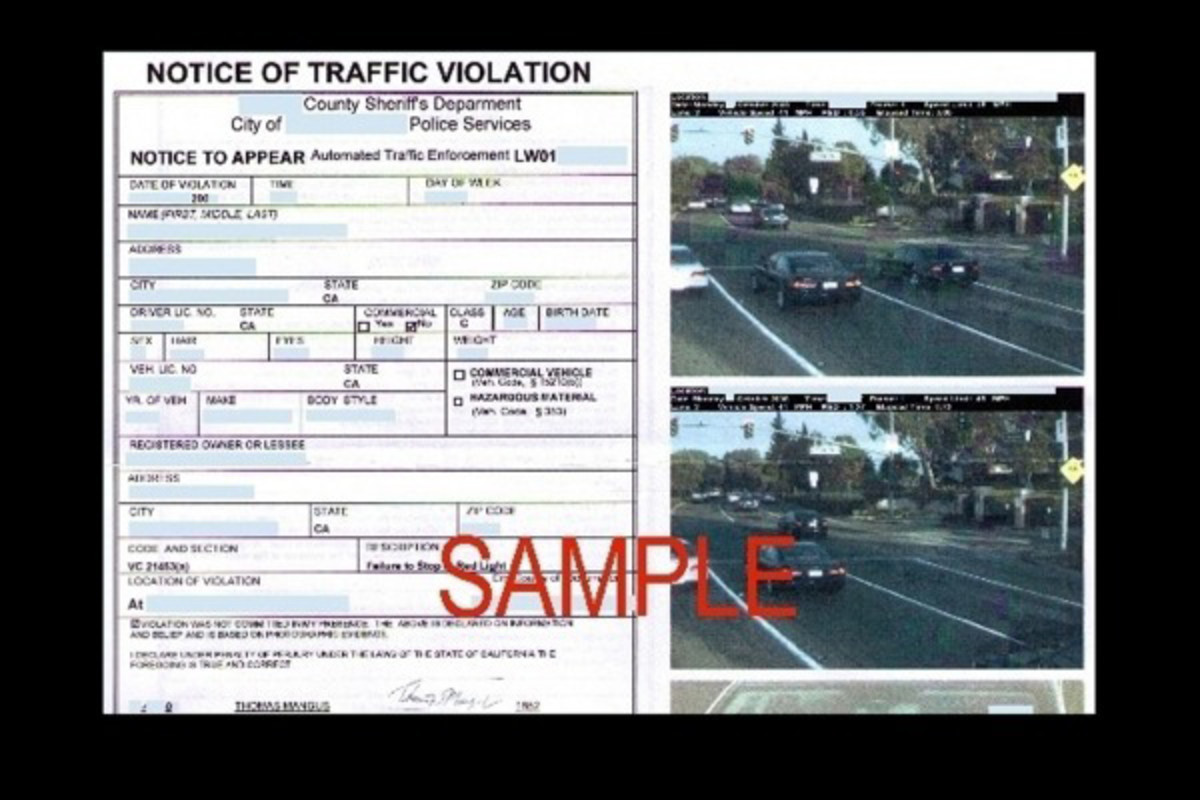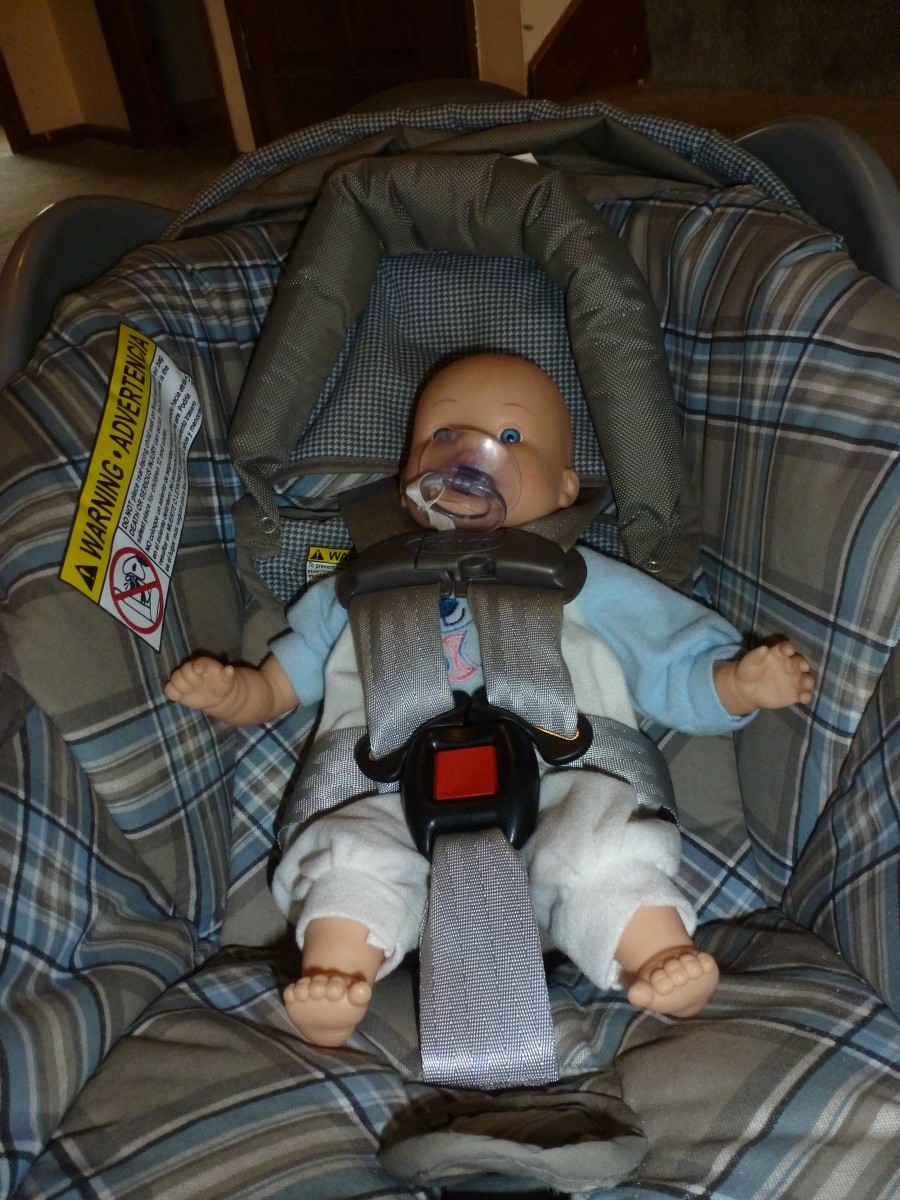Of Monstrous Proportions - The Dangers of SUVs
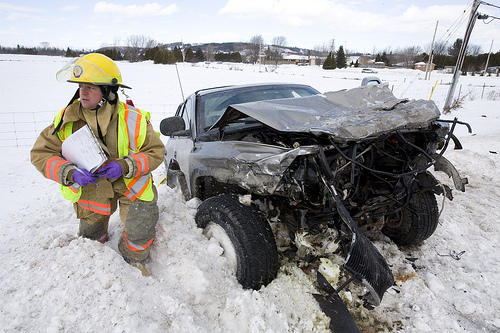
Sheri French was a junior philosopher, an avid swing dancer, and a lover of strawberries. She was an outstanding student, active in many extra-curriculars and always eager to learn. People loved Sheri for her friendly, outgoing personality and her inability to sit still. Certain things made her especially happy, such as good food, her beloved boyfriend John, and her 1995 Dodge Neon she had bought with her own money.
It was this Neon she was driving along Highway 12/121 on February 17, 2006 - five months after starting college at Cal Poly, a year and a half after she and John had started dating, and a month before her 19th birthday. Sheri and John were making their way home from a belated Valentine's Day outing when Sheri realized she had forgotten something at the restaurant they had visited. She turned the tiny car around and before anyone could react, a 1999 Chevrolet Suburban rolled up and crashed into the back of the Neon. John was killed instantly and Sheri was pronounced dead a few hours later.
Accidents such as this are tragic, but unfortunately they are not uncommon. Sport utility vehicles are involved in a great number of accidents every year, and many critics and safety experts are pointing the finger at the large sizes of the SUVs for causing such extensive damage. The sizes of SUVs render them dangerous to smaller vehicles, pedestrians and cyclists, and even their own occupants. Thus, SUVs should be made smaller to decrease the dangers they pose.
A General Threat
SUV owners find the large sizes of the vehicles desirable. According to Dale Wickell, a 27-year service manager for Toyota, people who buy sport utility vehicles want a combination of pulling capacity and passenger seating, cargo room, and offroading capabilities (Wickell). SUVS are seen as status symbols, and the vehicles of choice of the more affluent members of society. Also, people find comfort in the safety suggested by the massiveness of an SUV. Studies have shown that the bigger the vehicle, the safer its occupants. "Traveling in a larger, heavier vehicle reduces your risk of being killed in a crash," said Dr. Leonard Evans, president of the International Traffic Medicine Association. Pediatrician Dr. Greg Gulbransen said, "I bought this car because it was the safest thing to do for my family" (qtd. in "SUVs: Blind to the Danger").
However, the large size of SUVs can be reasonably attributed to deaths from accidents in which they were involved. Sport utility vehicles in their massiveness can cause serious damage to smaller vehicles. According to Hampton C. Gabler and William T. Hollowell of the National Highway Traffic Safety Association (NHTSA), crashes between large vehicles and cars accounted for 5,259 of the 10,497 total fatalities in 1996 while there were 4,013 deaths from crashes between two cars and 1,225 between two light trucks or vans (3). 81 percent of the 5,259 fatalities between light trucks or vans (LTVs) and cars were of those who were in the car. Frontal impact collisions involving LTVs made for 59.7 percent of fatalities in the frontal crashes. LTVs caused nearly 56.9 percent of all deaths in side-impact crashes when they were the striking vehicles, and car occupants are 27 times more likely to be killed than those in SUVs. All of this is in spite of the fact that SUVs accounted for only a third of all registered vehicles in that year (Hampton and Gabler 3).
Safety issues between SUVs and smaller vehicles are not limited to accidents and collisions alone. For instance, the height of an SUV presents a safety issue in that its headlights are placed higher than on a car. Many SUVs have their headlights mounted 36 to 39 inches above the ground, which is at the level of a small car's side mirror. The headlights of an SUV can reflect back from the car mirror into the driver's eyes and can create a safety hazard. And according to a study by the Society of Automotive Engineers, a membership society dedicated to advancing mobility engineering, the glare from headlights when they are at eye-level can be 10 to 20 times worse than recommended amounts ("SUVs: Escalating Risks On The Highway").
The sizes of SUVs also make them dangerous to pedestrians, bicycles, and motorcycles. Data compiled from 1995 to 2001 showed that if an SUV instead of a car hit a pedestrian or bicyclist, fatalities are 82 percent more likely and the probability of serious injury rises 12 percent. In "The ‘Arms Race' on American Roads: The Effect of Sport Utility Vehicles and Pickup Trucks on Traffic Safety," by UCSD economics professor Michelle White, a motorcyclist's probability of being killed rose 125 percent and serious injury was 35 percent more likely (12). The danger lies in the fact that the height of a sport utility vehicle makes the point of impact at a pedestrian's upper body or head rather than the knees. Additionally, if a car hits a pedestrian or a cyclist, they can be thrown onto the hood of the car, which is relatively soft; an SUV is too tall for this to happen. An SUV's size also limits the driver's visibility of the area surrounding the vehicle, especially the back. This makes it difficult for the driver to see objects behind the SUV, such as children or pets. CBS Evening News reported that in 2002, nearly 30 children were run over by SUVs that were backing up. Blind spots increase with the size of the vehicle and the height of the rear window; thus, the blind spots of the midsize vehicle average about 10 feet back, while in SUVs they reach behind more than 14 feet ("SUVS: Blind to the Danger").
Despite the increased safety of drivers and passengers of SUVs made for by the vehicles' large sizes, SUVs can still prove dangerous to their occupants. According to the SUV Info Link, a site dedicated to helping consumers decide what type of vehicle will meet their needs, sport utility vehicles are not required to meet the same safety standards as passenger cars and are therefore more vulnerable to danger. "Less rigid rules mean occupants of SUVs are not protected by the side-impact crash safety standards or strength requirements for bumpers required on standard passenger cars" ("SUVs: Escalating Risks On The Highway"). The NHTSA found that in 2003, "people driving or riding in a sport utility vehicle in 2003 were nearly 11 percent more likely to die in an accident than people in cars" (qtd. in Hakim). Nearly half of SUV deaths are caused when the vehicle rolls over. A report by the NHTSA concluded that SUVs have the highest death rate of any class of vehicles, mainly because of their rollover rates ("Gains Seen in Redesign of S.U.V.'s"). A vehicle's height determines how likely it is to roll over; the likelihood is greater as the height increases. As SUVs are designed to have a high ground clearance, they have a great tendency to tip over. Research by the NHTSA has shown that SUVs are three times more likely to roll than smaller passenger cars ("SUVs: Escalating Risks On The Highway"). It was also reported that in 2000, "passenger cars weighing 3,500 pounds had 106 deaths per million registered vehicles in the year 2000, while SUVs of that weight had 146." (qtd. in Valdes-Dapena).
Behind the Risks
There are different theories as to the effects of vehicle size in accidents. Robert W. Crandall of the Brookings Institution and John D. Graham of the Harvard School of Public Health claim that "reduction in vehicle size caused many additional traffic deaths and injuries" (Crandall and Graham). Another points out that while greater proportions increase the safety for occupants of SUVs, they reduce that of other vehicles, pedestrians, and cyclists. When some vehicles increase in size, traffic safety may fall because more crashes include vehicles of different sizes. This is known as vehicle incompatibility.
Vehicle incompatibility is often cited as the primary cause of death and injury in collisions between SUVs and cars. Klas Engstrand, a researcher for the Engineering Research and Development Bureau, says that vehicle compatibility is "a combination of crashworthiness and aggressivity and describes the overall performance of a vehicle when involved in single or multiple vehicle collisions," crashworthiness referring to a vehicle's ability to protect its own occupants and aggressivity describing the safety to the occupants of the colliding vehicle (Engstrand, 1). Incompatibility has become more of an issue as large vehicles have come to represent half of all sales of new vehicles. Brian O'Neill, president of the Insurance Institute for Highway Safety, said, "The fleet is becoming more mismatched" (qtd. in Newman). A 1998 study by the NHTSA found that the shift in favor from cars to SUVs has made for about 2,000 more deaths in accidents per year - five percent of the nation's annual fatalities ("SUVs: Escalating Risks On The Highway"). After analyzing 20 years of vehicle ownership and fatal accident records, White concluded, "When a million light trucks replace an equal number of cars, between 34 and 93 additional car occupants, pedestrians, bicyclists or motorcyclists are killed each year" (1). She placed the value of those lives between $242 million and $652 million a year, which she found by multiplying the average number of deaths per fatal crash (1.15) and the average value of a life ($7 million, based on factors such as one's income and workers compensation) by the number of fatal crashes avoided before the replacement of cars by SUVs (30), and the number of crashes avoided after replacement (80) (White 17).
The increased damage caused by SUVs results in large part to their designs. On average, SUVs are built to ride eight inches higher than a car. In addition, the rails of an SUV's larger frame are made of steel and are more in number, making the SUV more rigid. Most cars have only one rail ("SUVs: Escalating Risks On The Highway"). Also, "while cars are designed with ‘crumple zones' to absorb the impact of a crash, SUVs absorb less of the force of the crash and transfer more to cars" (White 2). These factors combined with the large size of an SUV increase the degree of danger it poses. For instance, the NHTSA found that an SUV can "sail right over the chassis of smaller vehicles and tear into the passenger compartment. An even stiffer vehicle is less likely to crumple in a crash and more likely to penetrate the other vehicle, especially if it ‘overrides' its doors or bumpers" (qtd. in Newman). A 1999 NHTSA study illustrated the negligible effects of an SUV's weight in an accident by crashing a Ford Explorer into a Honda Accord. The Explorer caused more damage to the Accord, despite the fact that they were approximately of the same weight. This is important to consider because automakers claim that it was the weight, not the size or the height, that makes SUVs dangerous to smaller vehicles ("SUVs: Escalating Risks On The Highway"). Gabler and Hollowell concluded from their study of vehicle aggressivity by vehicle category studies that "vehicle weight is not always the overriding factor dictating aggressivity... The higher aggressivity of the small pickup class may be due to its greater structural stiffness and its higher ride height" (7).
Decreasing the Danger
Studies have shown that decreasing the size of a sport utility vehicle can greatly reduce the damage it can cause. The results of a study released in February 2006 by the Insurance Institute for Highway Safety found that by lowering SUVs by as little as half an inch, the number of deaths in side-impact collisions fell by nearly 50 percent. Alterations such as this are made to reduce the likelihood that an SUV will slide over a car's doorsill and bumper and reach into the car's passenger compartment. Also, the chance of a belted driver being killed in a frontal collision with an SUV was reduced by a fifth after these changes were made. These findings mean that 600 to 800 lives could be saved every year in the United States alone if these alterations are fully enforced ("Gains Seen in Redesign of S.U.V.'s"). Also, "data from a 1997 NHTSA study suggests that reducing the average vehicle weight of all SUVs by 100 pounds might marginally reduce annual automobile-related fatalities" (qtd. in Adler). The Independent Insurance Agents of America, a nonprofit trade association representing a number of insurance agents and brokers nationwide, found in a 1998 poll that nearly 80 percent of SUV owners feel "very strongly" or "somewhat strongly" that automakers should make changes to SUVS and other large vehicles to reduce the risks for car occupants ("SUVs: Escalating Risks On The Highway").
To make SUVs more compatible with other cars, manufacturers have been making design changes other than shrinking or lowering the vehicles to make them more compatible with other cars. Ford added a front beam and a rear tow hitch to prevent other vehicles from sliding under the hefty Expedition in a crash ("SUVs: Escalating Risks On The Highway"). The Mercedes M-Class has its bumper lowered nearly to the levels of many cars (Newman). Also, Ford and Toyota have installed "blocker beams" behind the bumpers of their SUVs, like the Ford Expedition and Toyota Sequoia; doing so lowers the impact point in a collision. However, automakers are holding back from making sweeping alterations because of difficulties and costs. For example, adding standard equipment side-impact air bags and "curtain" air bags that come down from the roof lining to aid in rollovers can add up to $1,000 to the cost of a vehicle (Newman). Also, technology and devices have been developed to offset the dangers created by an SUV's large size, but many of them have proved ineffective or unrealistic. Sensors have been placed on the back bumpers of certain models of SUVs in order to avoid back-over accidents, but they are yet to prove their effectiveness ("SUVs: Blind to the Danger").
The question of increasing the size of cars themselves to reduce compatibility problems has arisen as well. The government has considered this in its studies of possible solutions to vehicle incompatibility, such as requiring the load-bearing structures of all passenger vehicles to be at compatible heights (Newman). Sam Kazman of the Competitive Enterprise Institute said, "Upsizing the car fleet may well be the most important step we could take toward improving safety" (Kazman). Nevertheless, owning a car is a matter of aesthetics, practicality, and/or financial status. People may prefer smaller vehicles for their fuel efficiency and their convenience in handling and size. A main issue, however, is that many people cannot afford large vehicles. Rutgers University law professors Howard Latin and Bobby Kasolas noted that buying larger, more "defensive vehicles" may mitigate the issue of incompatibility, but "SUV buyers are typically affluent people" while "the random victims of SUV collisions will be distributed across the entire income range, including many poor people who cannot afford . . . an SUV" (Latin and Kasolas). There is little that can be done about the tens of millions of large SUVs that are already on the freeways and that serve as potential dangers to drivers and pedestrians alike. However, changes can still be made in SUVs in the future in order to lessen such danger. As sport utility vehicles in the great magnitude of their sizes are so dangerous to people on and off the roads, the best way to prevent death and injury from accidents is to downsize the SUVs themselves. By doing so, the chances are better for people like Sheri French to graduate from college, marry the loves of their lives, and continue bringing joy into the hearts of those who love them.
Works Cited
Adler, Jonathan H. "Easterbrook Off the Rails." National Review Online. 20 Jan. 2003. 24 Feb. 2006.
Crandall, Robert W., and John D. Graham. "The Effect of Fuel Economy Standards on Automobile Safety." 32 Journal of Law and Economics 1. Apr. 1989. 4 Mar. 2006.
Engstrand, Klas. "Vehicle Aggressivity." Worcester Polytechnic Institute. 1999: 1. 4 Mar. 2006.
Gabler, Hampton C., and William T. Hollowell. SAE Paper 980908: The Aggressivity of Light Trucks and Vans in Traffic Crashes. 26 Feb. 1998: 3-7. 28 Feb. 2006.
"Gains Seen in Redesign of S.U.V.'s." TimesDaily.com. 7 Mar. 2006.
Hakim, Danny. "Safety Gap Grows Wider Between S.U.V.'s and Cars." The New York Times Business. 17 Aug. 2004. 5 Mar. 2006.
Kazman, Sam. "Large Vehicles Are The Solution, Not The Problem." Competitive Enterprise Institute. 12 Mar. 1998. 4 Mar. 2006.
Latin, Howard, and Bobby Kasolas. "Against SUV Collision Risks." 82 Boston University Law Review 5. Dec 2002. 4 Mar. 2006.
Newman, Richard J. "Big, Bad Brutes?" U.S. News & World Report. 10 Mar. 2003. 24 Feb. 2006.
"SUVs: Blind To The Danger." CBS Evening News. Host Jane Clayson. CBS. 4 Dec. 2002.
"SUVs: Escalating Risks On The Highway." The SUV Info Link. 24 Feb. 2006.
Valdes-Dapena, Peter. "SUVs: How dangerous are they?" CNNMoney. 15 Jan. 2003. 24 Feb. 2006.
White, Michelle J. The ‘Arms Race' on American Roads: The Effect of Sport Utility Vehicles and Pickup Trucks on Traffic Safety. Nov 2002: 1-17. 6 Mar. 2006.
Wickell, Dale. "5 Reasons Why People Buy Sport Utility Vehicles." About.com. 8 Mar. 2006. 8 Mar. 2006.

